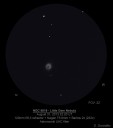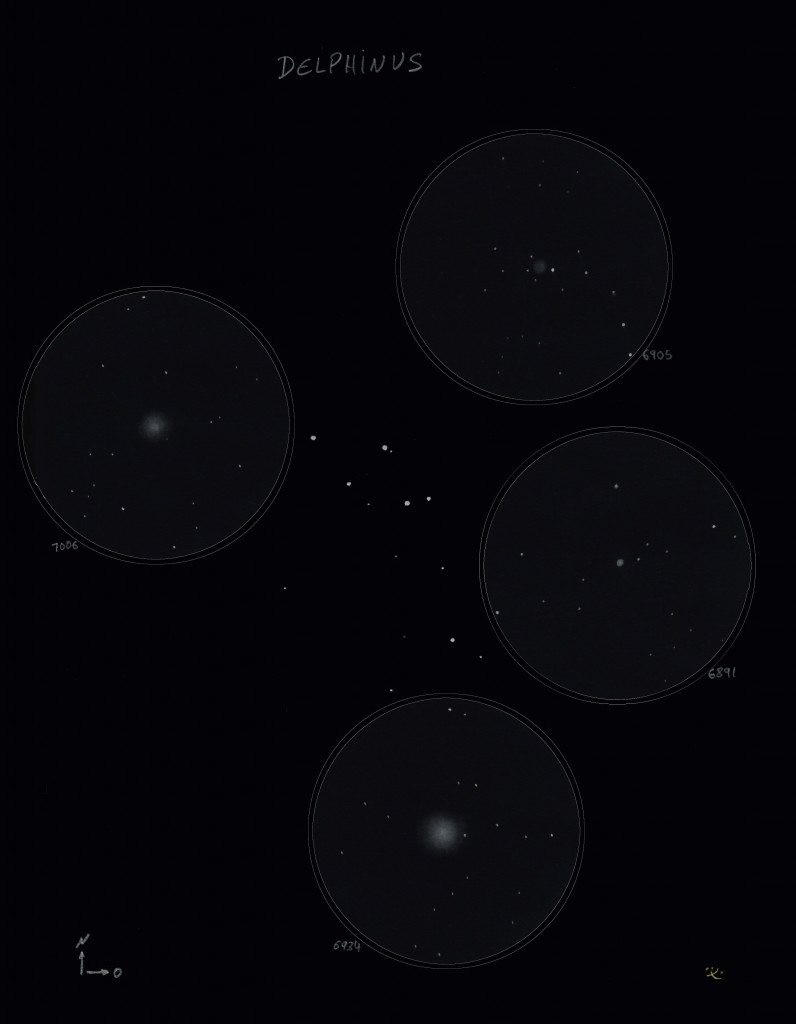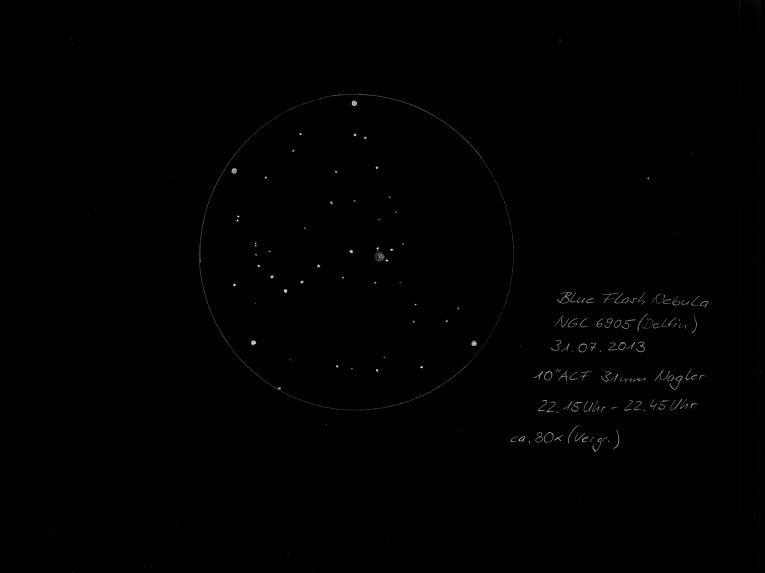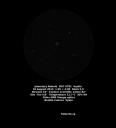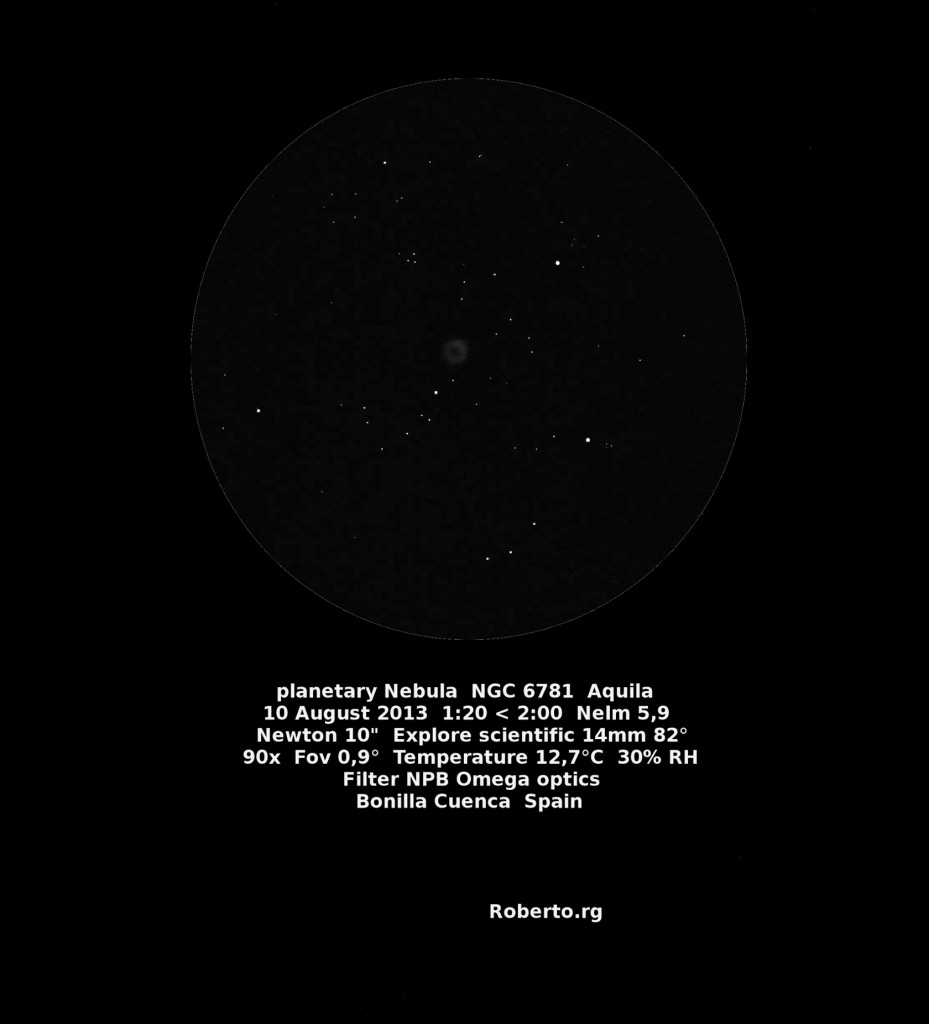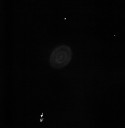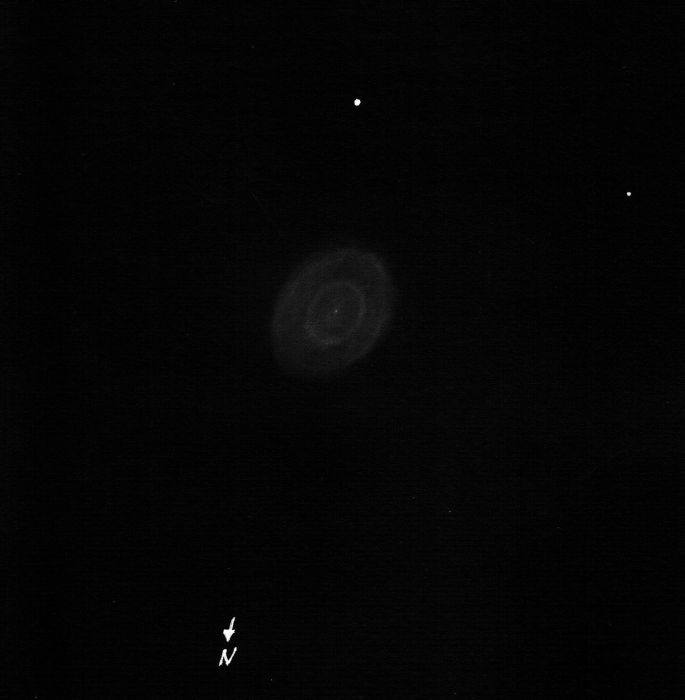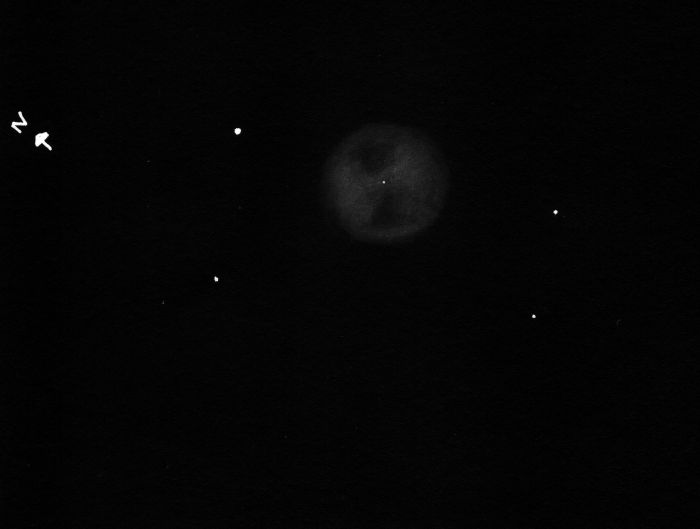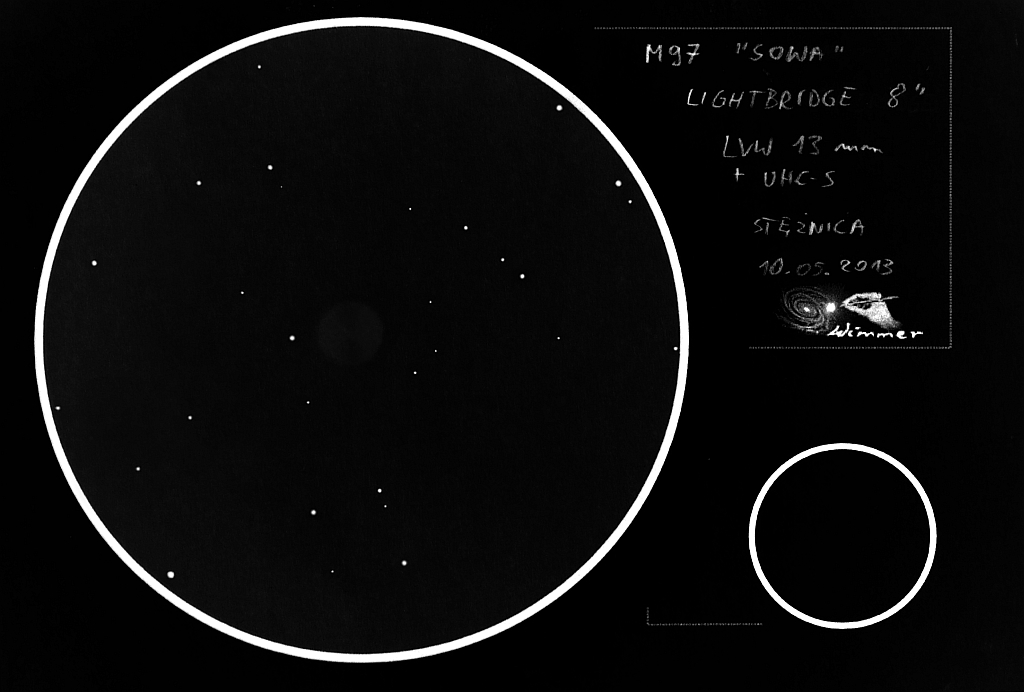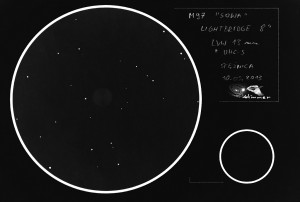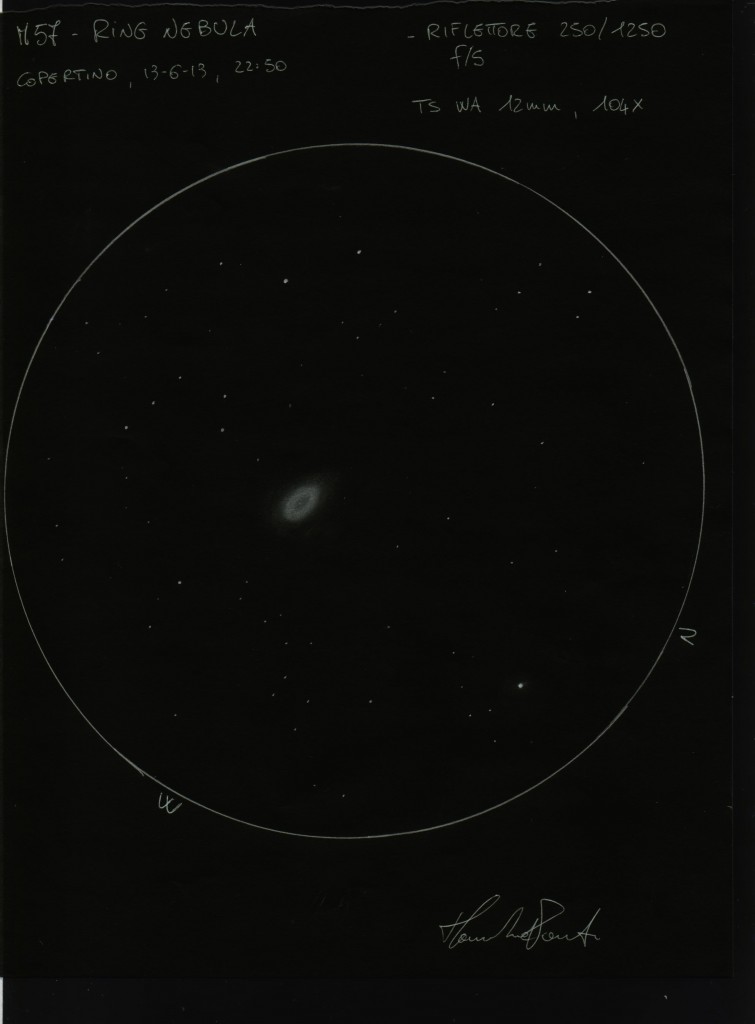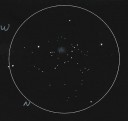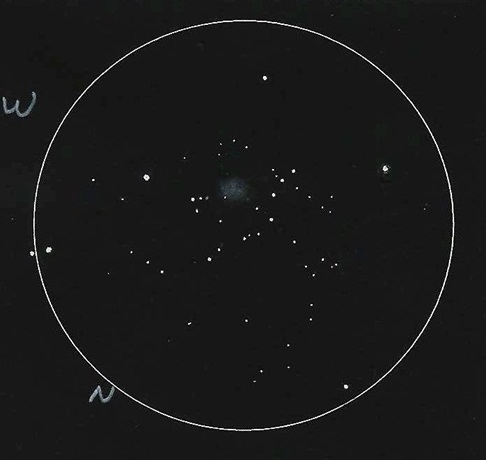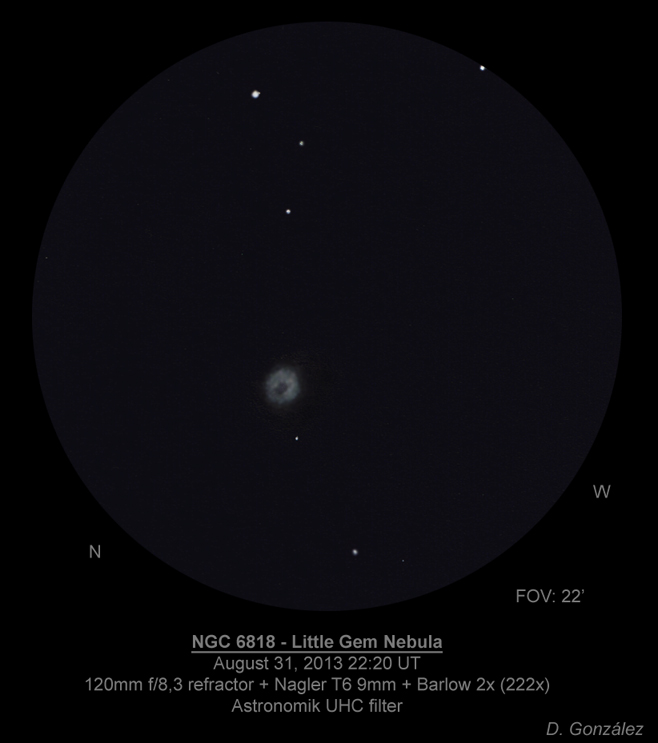
NGC 6818, also known as the Little Gem Nebula, is a small but bright planetary in Sagittarius. It is one of my favorite summer objects because of its annular structure, which is not difficult to see even with my small telescope. The best view comes at 222x with an UHC filter, that makes its ring shape easier to spot. Curiously, it seems that the central dark region is not exactly in the center but slightly off to the north, and the ring is brighter in its southern half. At low powers the nebula shows a lovely greenish-blue color, which is typical of many bright planetaries.
Sketch: 2HB graphite pencil on white paper, scanned and processed with Photoshop CS3
Object Name: NGC 6818, the Little Gem Nebula
Object Type: Planetary nebula
Location: Asturias, Spain
Date: August 31st, 2013 22:20 UT
Instrument: 120mm f/8.3 refractor + Nagler T6 9mm + barlow 2x (222x)
NELM: 5.6
Best regards,
Diego González
